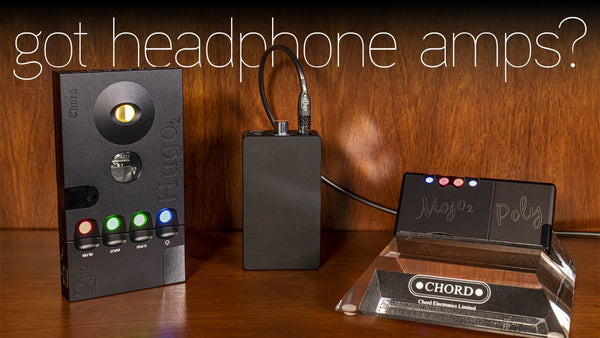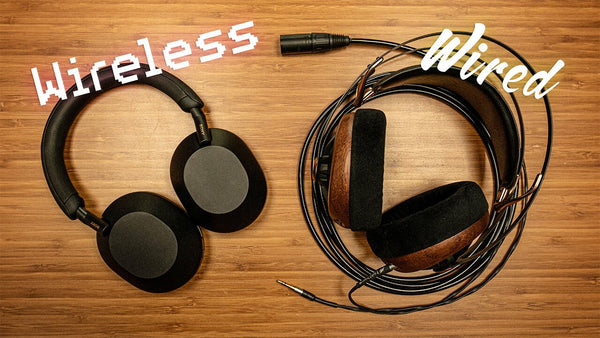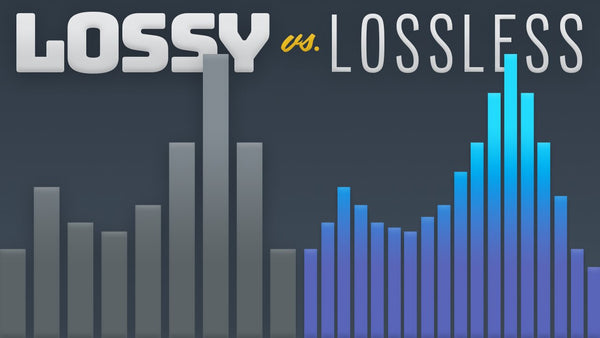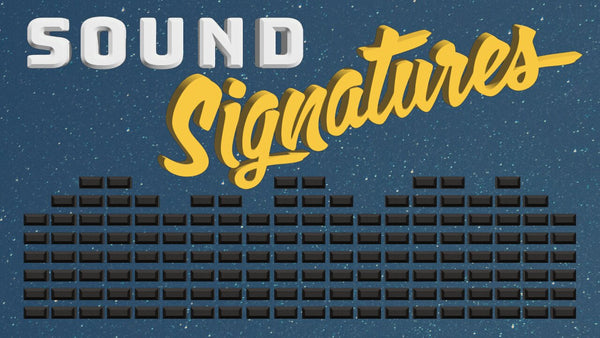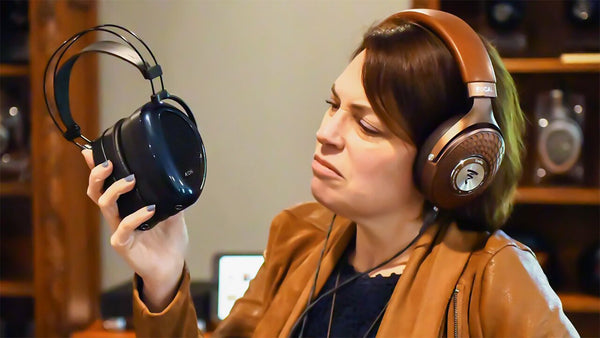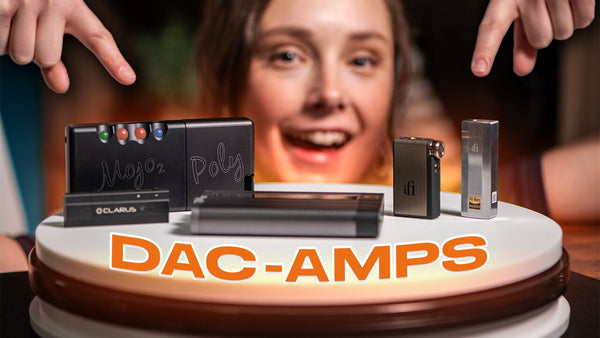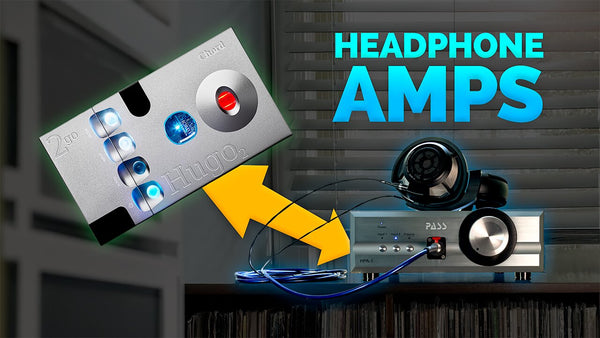Vinyl vs. Streaming: The Debate Over Audio Quality
Read Time: Approx. 15 min.

Is Vinyl Truly Better than Digital?
If I stopped an audiophile on the street 10 years ago and asked them if they thought vinyl would make a raging comeback they'd probably laugh and say no. From the moment the Apple iPod hit the scene it seemed like physical media was a thing of the past. We hauled boxes of tapes and CDs to the local thrift shops and chucked that old CD Player out the window. But the recent resurgence of vinyl has sparked a large topic of debate–does vinyl sound better than digital? Diehard vinyl lovers will argue yes, while tech-savvy Millennials and Gen Z's like myself may disagree. No two listeners are alike and it truly comes down to personal preference, so which way do you lean?
Vinyl versus Digital Audio Streaming: The Big Picture
Subjectively speaking, digital audio streaming and vinyl records couldn't be more different. For starters, vinyl is physical, and digital audio streaming is not.
There's an allure to vinyl records that only other vinyl listeners understand. I remember the first time my dad pulled out his record collection and we sat together on the living room floor, surrounded by vinyls and old memories. "This one was my dad's," he said as he handed me the soundtrack to Star Wars: Episode IV– A New Hope. I'll never forget the sound of that opening scene playing over the speakers. I was a young child then, and I didn't quite understand the significance of that moment with my Dad until I was much older.
As a Gen Z child, I witnessed the decline of physical media and the rise of tech-savvy digital audio streaming with the Apple iPod Touch, smartphones, smart TVs, and so on. The days of heading to Blockbuster for the latest DVD and then bopping over to Walmart for a new CD diminished before my eyes. Wanting the newest iPod Touch turned to begging for an iPhone, then a new smart TV, and now having to decide which streaming service I'm subscribing to. Just when I got an interest in vinyl records and my dad's cool stereo system they were being moved into storage for the foreseeable future. And honestly, it wasn't until about a year or two ago that my dad got back out his record player and vinyl collection–which now lives permanently in his office to enjoy Star Wars any time we please.

What Vinyl Is
- Physical media
- Warm & neutral analog sound with subtle imperfections
- Intentional, intimate, and nostalgic
What Vinyl Isn't
- Convenient
- Portable
- Inexpensive
- Immune to degradation, surface noise, and distortion
What Digital Audio Streaming Is
- Convenient
- Effortlessly portable
- Affordable
- Superior technical accuracy & consistency
- Immune to physical wear
What Digital Audio Streaming Isn't
- Physical media
- Immune to file compression
Today's latest generation is disconnected from the care and keeping of vinyl records. They may never know the maintenance associated with owning a turntable and the delicacy required when lowering the needle. A large part of vinyl's allure is the tactile listening experience. You spend a whole month saving money for a copy of your favorite band's newest album just to race home and gawk over the artwork adorning the jacket and inside covers. Moon Audio's CEO and Founder Drew Baird, P.E. told me he and his friends used to spend hours passing around albums reading every last word from the artist. Even the most ordinary cover still had more information than what you're lucky to find available on your music streaming service today.

Let's face it–digital audio streaming is easy. It's carefree. Aside from renewing your monthly music streaming subscriptions (which even then are usually automatic), you just plug and play–all at your fingertips. Digital audio streaming is convenient and doesn't take up space in your attic. It doesn't collect dust or scratches and it's always in the same place where you left it. But what isn't digital audio streaming? It's not nostalgic like vinyl and it's not unique. Unless you purchase the song, you don't own it forever. Once you cancel that streaming subscription, your access to all that new music is gone. You can spend hours curating the perfect playlist on Spotify or Amazon Music, but it's not truly yours. It's hard to replicate the pride of owning one of the first copies of a new record or thrifting one of the few limited edition covers left today.
The Science of Sound: Vinyl vs. Digital Audio
Ask anyone who's been listening to vinyl records their entire life and they'll die on a hill to tell you how much better the sound of vinyl is than its digital counterpart. But do vinyl records really sound better? There's no question that vinyl pressings deliver a unique sound quality. The sweet analog sound waves that're warm and authentic combined with the crackle of surface noise is nothing short of magical. Vinyl records, with their inherent imperfections in the waveform, deliver a level of authenticity that can be hard to replicate in digital recordings. And those occasional pops and hisses draw in vinyl lovers, reminding us that music production is raw and unforgiving. You might feel a more emotional connection with a vinyl record than a digital format solely because of those imperfections.

On the other hand, digital sound is clear and concise, often lacking the imperfections associated with physical media. To some that sonic accuracy and frequency response can sound "too perfect." But with advanced technologies and lossless audio formats like FLAC, manufacturers are finding ways to mimic the authentic warmth of analog, digitally. How? Let's check it out.

Today, digital audio files come in many different file formats, with most falling under the umbrella of DSD or PCM. PCM is an uncompressed audio format, commonly used in CDs, DVDs, etc–It's the universal standard. As an uncompressed format, the files are larger, but you experience maximum sound quality with no losses. DSD, on the other hand, is a high-resolution audio format created as a more space-efficient way of storing digital music data than PCM. DSD was also designed to easily convert PCM files with sampling rates based on multiples of 44.1 kHz. Why do I bring this up? PCM and DSD don't sound the same.
The higher sampling rate of DSD allows it to capture more subtle changes in the audio signal, resulting in a perceived smoothness and naturalness that's closer to an analog recording. Yes, you read that right. To our ears, DSD can sound like vinyl. Emphasis on can here, I'm not making any matter-of-fact claims. If you A/B test a vinyl record and a DSD file of the same song, it's not going to sound identical, but it's a good compromise for vinyl lovers listening digitally. dCS is a manufacturer whose DACs perform DSD upsampling and are often recognized for sounding analog-esc. PCM audio files–in their lossless nature–are characterized as detailed and resolute-sounding. More in line with what you'd expect from a digital audio file. Chord Electronics is an example of a manufacturer that prefers PCM over DSD. Two different digital file formats with two different tonalities.
The Music Lover's Compromise: Vintage-Inspired Audio Gear
Those stuck in the throws of vinyl versus digital can now have their cake and eat it too. Manufacturers have been paying attention to today's trends and taking notes. We're now seeing amplifiers, phono preamps, DAPs, DACs, and more equipped with modern-day technologies, but aesthetically they look vintage.
Take the NAD C 3050 BluOS Stereophonic Amplifier. It's got retro design elements like a walnut-finished vinyl-clad cabinet and 1970s cursive-style branding but with today's high-quality features multi-room streaming and Dirac Live room correction. And with an ultra-low-noise MM phono stage, you can still enjoy the warmth of your favorite vinyl.
Audiophiles who prefer vinyl may naturally gravitate toward the audio quality of tube headphone amplifiers over solid-state amps. Vacuum tubes are regarded for their authentically warm and natural sound. Just like vinyl, there's a sense of magic that comes with tube rolling and gazing at that yellow glow while you listen. Our Dragon Inspire IHA-1 Tube Headphone Amplifier is the perfect high-end component for those craving a listening experience reminiscent of vinyl.
For the Dragon Inspire, our Silver Dragon Premium Interconnect Cable is going to be the perfect link between your devices. The Silver Dragon Interconnect is built for zero interference with a braided geometry and high-quality shielding so there's nothing between you and your music. The UP-OCC pure Silver conductors add detail and resolution unveiling the music, allowing you to enjoy it with breathtaking clarity.
The apparent downside to vinyl is its lack of portability. As if carrying boomboxes on our shoulders wasn't uncomfortable enough, can you imagine sporting an entire record player on your back? I don't think so. But it's not for a lack of trying because it was attempted–just in the car. "Highway Hi-Fi" as it was branded, was the must-have accessory at one point in time when Chrysler had the smart idea to put a mini turntable in the dash of several models. Dangerous is one of the words I'd use to describe this invention, but this was also during a time when seatbelts were an accessory and not a necessity.

Luckily that idea never stuck and we now have companies like Astell&Kern to thank for giving us the "vinyl listening experience" portably. One of AK's most recent DAPs, the SP3000T is an ingenious little music player equipped with real vacuum tubes, affording you the luxury of analog warmth and hi-res digital audio files at your fingertips. While it doesn't have a slot for you to insert your 45s, you can still enjoy a listening experience akin to that of vinyl. The Silver Dragon Premium USB Cable is our best-selling USB cable at Moon Audio, offering an extraordinary amount of detail and resolution to your hi-fi system. For times when performance matters the most, the Silver Dragon Premium USB Cable offers an extraordinary amount of detail and resolution to your hi-fi system.
As for turntables, you don't have to scour secondhand websites and forums for a vintage turntable (unless you want to), because Technics Turntables are back and better than ever! A name synonymous with vinyl, Technics has been at the forefront of vinyl playback for quite some time. Precision engineering, iconic design, and exceptional sound quality are some of the attributes I'd use to describe a Technics turntable. With a legacy dating back to the 1970s, the company has a proven track record of reliability, with many decades-old units still performing excellently. Their turntable lineup today hasn't strayed that far from what was being produced in the 70s and 80s–It's just a little more tech-savvy. From the newly released SL-1300G Grand Class Turntable to the more affordable, entry-level SL-1500C Direct Drive Turntable, Technics excels at delivering an analogue sound with great dynamic range for your entire vinyl collection.
Our Dragon Interconnects are the perfect pairing with your Technics turntable. With RCA outs, our Silver Dragon, Black Dragon, Bronze Dragon, and Blue Dragon Interconnects will help bring out amazing detail and resolution in your analog signal - making sure that you are hearing nothing but your favorite music in its purest form. We make our interconnects to work perfectly with your Technics turntable - just plug in and hear the difference!
Verdict
In the court of public opinion, the case of vinyl versus digital audio has no verdict. The answer is as subjective as the music we listen to and there's room for both to coexist in perfect harmony. With today's advanced technologies, hi-fi manufacturers are pushing the envelope of what's sonically possible from a high-end component. Take Astell&Kern, for example. The SP3000T DAP incorporates real vacuum tubes, blending analog and digital so you can enjoy the best of both worlds. Add the Silver Dragon Premium USB Cable, our best-selling USB cable at Moon Audio, offering an extraordinary amount of detail and resolution to your hi-fi system.
I'll be the first to say that some songs simply sound better on vinyl–and vice versa. I can't imagine going out to buy Taylor Swift's latest album on vinyl when I've always listened to her music digitally. Whereas it only feels natural to enjoy a group like The Beach Boys on a record player. For me, listening to vinyl is akin to stepping into the past. I get a glimpse of what it was like spinning that record for the first time over a turntable. What it sounds like. How it smells. I take pride in owning a piece of history. But then when I want to step outside of my little hi-fi bubble at home, I can still enjoy that song digitally.
As audiophiles, we’re afforded the luxury of experiencing both analog and digital audio. We can curate the perfect analog audio setup with high-quality phono preamps, a thousand different styluses to choose from, and enough phono cartridges for every day of the week. So why pick one over the other when you can enjoy both?
Related Videos
Technics SL-G700M2, SU-G700M2 High-End Features at Mid-Fi Prices
Why Technics Turntables Became the Industry Standard ft. Bill Voss
We Tour Drew's NEW Home Listening Room







